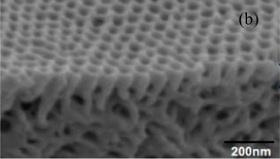Using AI to control energy for indoor agriculture
30 September 2024
Published online 30 January 2013

Separating different proteins by traditional techniques such as chromatography can take time and is expensive. Nanofabricated membranes are a cheaper alternative, but commercially available ones are only able to separate proteins with a large difference in size.
A new nanoporous membrane made from a block copolymer (a polymer composed of blocks of different monomers) is being developed by a team of scientists at the King Abdullah University of Science and Technology (KAUST), Thuwal, Saudi Arabia. With details published in ACS Nano, the membrane is not only capable of highly sensitive filtration by size, it is also able to selectively separate proteins based on their electric charge.
The membrane is composed of a thin layer of uniform cylindrical channels perpendicular to the surface atop a non-ordered spongy layer. And it is more permeable to water than other currently available membranes of a similar pore size.
This permeability makes it particularly well-suited to the separation of biomolecules such as proteins. Using spectroscopy to compare two proteins that differed in size by a factor of two, the researchers found the smaller protein diffused across the membrane 87 times more readily. The pore size of the membrane is tunable by pH, allowing even identically-sized proteins to be separated as long as their charge differs.
"It is just the starting point for a new generation of membranes with a self-assembled transport layer with a high potential for bio-separation processes" says Xiaoyan Qiu, lead author of the study.
doi:10.1038/nmiddleeast.2013.16
Stay connected: